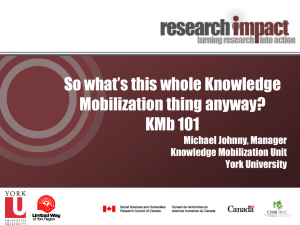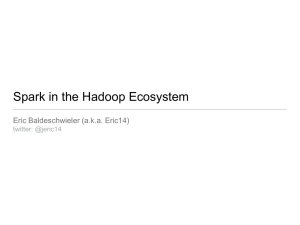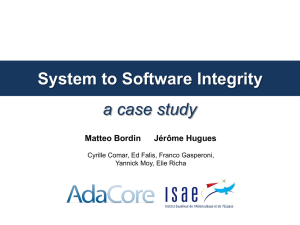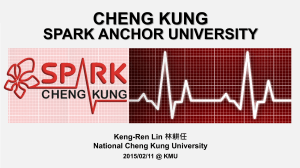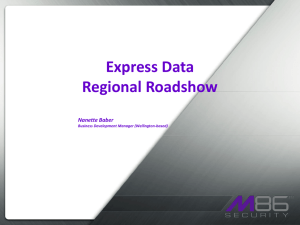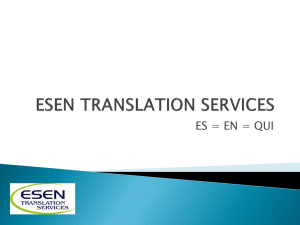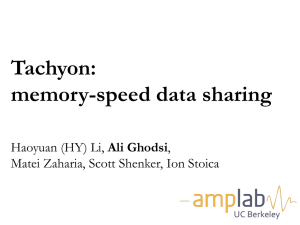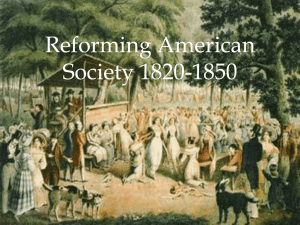Research - University of Guelph
advertisement
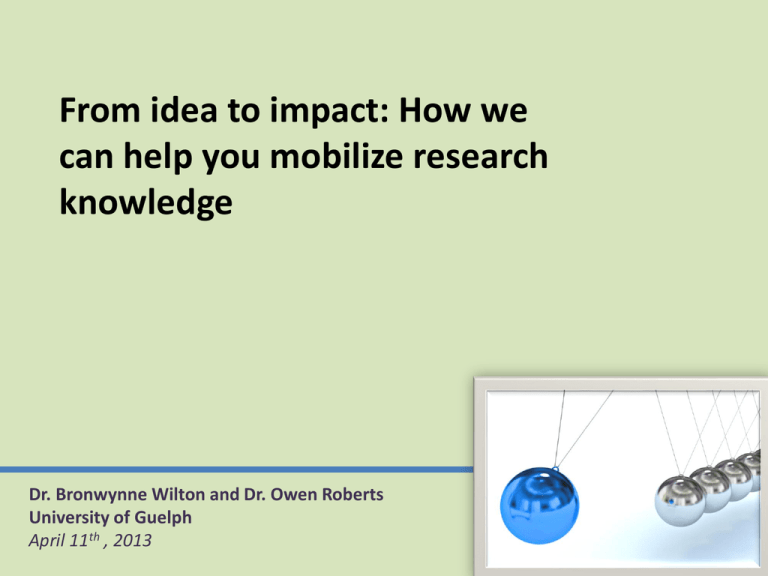
From idea to impact: How we can help you mobilize research knowledge Dr. Bronwynne Wilton and Dr. Owen Roberts University of Guelph April 11th , 2013 Outline Why Knowledge Mobilization KMb Barriers and Best Practices KMb in the Research Grant (OMAF & MRA – U of G Example) Telling your story: Research Communications Why ‘Knowledge Mobilization’? • Increasing emphasis for publicly funded research to be relevant to society • Increasing need to solve complex societal issues “The answer, I am convinced, lies in what I call the diplomacy of knowledge, defined as our ability and willingness to work together and share our learning across discipline and borders.” (David Johnston, G&M 2012) Addressing the Know-Do Gap: Asking and Answering 3 Questions: • Are we doing the research that is needed? Specifically research that research users need? • Are we applying the research that has been done? Are we doing that effectively? • How can we accelerate the transformation of knowledge into action? Are behaviours changing? 4 5 Definitions of Knowledge Mobilization • Knowledge mobilization involves making knowledge readily accessible – and thereby useful to any number of individuals and groups in society – by developing ways in which groups can work together collaboratively to produce and share knowledge. http://whatiskt.wikispaces.com/Knowledge+mobilization Definitions of Knowledge Mobilization • Knowledge mobilization connects research and researchers with people and organizations seeking to develop sustainable solutions to social, environmental, economic and cultural challenges. Definitions of Knowledge Mobilization • Knowledge mobilization relates to the flow of knowledge and information among multiple individuals and groups, leading to intellectual, social, and economic benefits. Knowledge mobilization aims to allow the exchange of research knowledge both between university researchers and the wider community, and across different academic disciplines. Definition in the OMAF and MRA-U of G Partnership … the synthesis, exchange and application of knowledge (resulting from interactions among one or more of the University, University researchers, OMAFRA, various internal and external stakeholders of the University and OMAFRA, and various members of the public) involving dissemination of the results of research and other activities occurring pursuant to the agreement. 9 More simply… “KMb/KTT” accelerates the transformation of research knowledge into use. 10 KTT Push –Pull Research Producers Push Knowledge Exchange Research Users Pull Understand your different users. 11 11 The OMAF and MRA – U of G Knowledge Translation and Transfer (KTT) Program $5 million one-time funding 2008-2013 Rebecca Hallett, School of Environmental Sciences 13 KTT Networking, Events, and Tools Research Forums and Expos KTT Community of Practice Annual Knowledge Exchange Day KTT Tools Enhanced Communications @AgFoodRuralLink Sharing Knowledge through Social Media KMb in the research grant*: Research User Groups Involvement of Research Users in Project KTT Methods and Timelines Explain how users will benefit from the research This research is important to:_______ The users of this research are involved in the implementation of the project: _____ The research users will be communicated via the following ways: _________ The users benefit from the research in this way:_____ 1. 1. 1. 1. 2. 2. 2. 2. * Component of research proposals for the OMAFRA-U of G Partnership research program. 16 Successful Kmb A KMb Plan is essential to enable a clear KMb intention , in other words, to make KMb happen versus let KMb happen KMb Plan based on 5 key questions What messages need to be transferred to users/decision-makers? To whom should research knowledge be transferred? (Who?) Who should transfer the research knowledge? (By whom?) By what processes (how) should research knowledge be transferred? With what effect should it be transferred (evaluation)? Key points • Strong Narrative - What are you doing? • Strong Explanation - Why is it important? • Link to Future Action - decision, directions, answering a users issue • Clear statement of potential value to be produced and for whom? 17 Tri-Council Funding and KMb Social Sciences and Humanities Research Council: Connections grants http://www.sshrc-crsh.gc.ca/funding-financement/umbrella_programsprogramme_cadre/connection-connexion-eng.aspx Natural Sciences and Engineering Research Council: National Centres of Excellence in KMb http://www.nce-rce.gc.ca/NetworksCentres-CentresReseaux/NCEKMRCEMC_eng.asp Canadian Institutes of Health Research: Knowledge Translation http://www.cihr-irsc.gc.ca/e/29418.html Successful Institutional KMb Practices Research user groups are identified, defined and involved in the research process Linkages, associations, partnerships and networks defined and active to allow access to knowledge and knowledge flow. Researchers and research users work in close proximity and/or together on collaborative teams. Research institutions, knowledge broker agencies, knowledge translations and transfer institutions have the internal capacity and infrastructure to support and engage KMb. KMb isn’t just “let to happen” it is “made to happen” through planning (KMb Plan) The plan is implemented through timely transfer efforts. There are incentives, recognition and rewards for KMb 19 19 Effective KMb – the take-away message Develop your KMb plan during the planning stage of your research project. Understand your audience Who they are and what are their interests and needs What terms/concepts/language do they understand If you could only make 3 points what would you say (key messages) What communication form is best for your audience. Don’t wait until you have finished your research- communicate your research throughout your project. Relationships with users is key. 20 SPARK/Research Communications: Building relationships for a unique approach to knowledge mobilization, translation and transfer Who we are A strategic unit supporting University of Guelph research through print, video and audio content How we can help you We help mobilize knowledge by helping you translate, transfer and tell your story SPARK at a glance… • Over the past 24 years, SPARK has become one of the main sources for research communications at Guelph • SPARK is an educational program, giving students opportunities to gain practical, professional journalistic writing and multimedia skills • SPARK students become immersed in the University’s research community, interacting with researchers from all colleges • SPARK produces accurate, engaging material for an array of internal and external stakeholders SPARK Research administration SPARK Research administration SPARK Knowledge translation External relations department Research community Research administration SPARK Knowledge translation External relations department Knowledge transfer Research community Research administration SPARK Knowledge translation External relations department Knowledge transfer Research community Society/Community/Stakeholders Research administration SPARK Knowledge translation External relations department Knowledge transfer Research community Society/Community/Stakeholders Industry Media Government Public Academia Research administration SPARK Knowledge translation External relations department Support Knowledge transfer Research community Society/Community/Stakeholders Industry Media Government Public Academia Research administration SPARK Knowledge translation External relations department Support Knowledge transfer Research community Feedback Society/Community/Stakeholders Industry Media Government Public Academia Internal and external emphasis Internal: • The Insider monthly enewsletter distributed to faculty • Contribute articles and videos to on-campus departments • SPARK articles and videos are featured on the U of G homepage through our relationship with C&PA • Website, twitter and Facebook for funding opportunities and news External: • Monthly and bi-monthly article contributions to numerous commodity publications • Ongoing partnership with OMAF -MRA and KTT program, creating articles, publications and videos that highlight partnership-funded research • Research news articles for local media • Create broadcast-news style videos about Guelph research Some SPARK metrics • SPARK produces 125-150 full length articles (500 words) and 35-40 broadcast videos per year • Output is expected to increase to approx. 200 print articles and more than 50 videos in 2012-13 Research magazine OMAF MRA -U of G Yearbook Strategic partnerships We work with a diverse array of stakeholders, such as: • • • • SHARCNET The Catalyst Centre Guelph Mercury Knowledge Translation and Transfer program “Four pagers” • Have encompassed the pillars of the Better Planet project, highlighting health, environment, communities and food • New topics: water, animal health, URCs and CRCs Guelph Mercury media presence Engaged with the editorial staff at the Guelph Mercury to contribute research articles SPARK*air • SPARK’s in-house video-production initiative • Producing engaging, informative and colourful research news-based segments • Filming and post-production KMb and Communications Working together to mobilize research knowledge at the University of Guelph Questions? KMb resources • • • • http://www.uoguelph.ca/omafra_partnership/ktt/en/index.asp http://www.omafra.gov.on.ca/english/research/kttiindex.htm http://researchimpact.wordpress.com/about/ http://www.sickkids.ca/Learning/AbouttheInstitute/Programs/KnowledgeTranslation/Knowledge-Translation.html • http://ktclearinghouse.ca/ • http://www.ktecop.ca/ • http://www.inweh.unu.edu/River/KnowledgeManagement/documents/KS tar_ConceptPaper_FINAL_Oct29_WEB.pdf 43 Communications resources Websites: http://www.uoguelph.ca/research/ http://www.uoguelph.ca/research/spark Blog: http://sparkuoguelph.wordpress.com/ YouTube channel:http://www.youtube.com/user/sPARKatUofG Twitter: @SPARKUoG, @UofGResearch @AgFoodRuralLink
